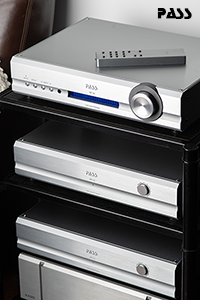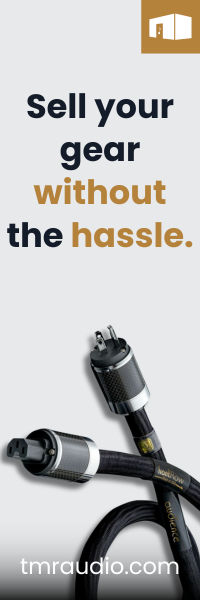The Levin Record Cleaning Brush
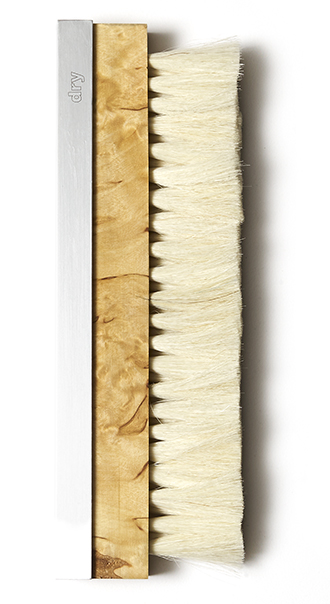 Article and Photo by Michael Corsentino
Article and Photo by Michael Corsentino
Record cleaning never looked so damn sexy! Meet the Levin record cleaning brush and its matching case. Handcrafted in Germany using centuries-old brush making techniques, the Levin brushes are made with hand-pulled horse or Chinese goat’s hair, for bristles that remain in place and provide years of use. Models for both wet cleaning and dry dust removal are available in a variety of exotic wood finishes ranging from bog oak, root wood, Karelian Birch Maser, pear wood, walnut or POM. Bristles are also offered in both white or black. I chose the Karelian Birch dry cleaning brush for its visual appeal and white bristles to easily see when they require cleaning. The natural hair bristles are gentle on your records and can be easily washed using soap and a damp cloth as needed.
Not your average brush
Levin brushes range in price from $99 to $175, with cases starting at $79. That’s not cheap, and it took a minute for this vinyl enthusiast to wrap their head around the cost; even a sexy, best in class product like this. I confess I hate spending money on record sleeves, cleaning fluid, brushes, etc. I’d rather spend that money on more records. But these purchases fall squarely into the necessary evil category; I grin and bear it because I know how important it is to take great care of your records.
Once you hold the Levin brush in your hand, the quality and care in its construction is evident. Fit and finish are outstanding. The matching wood and metal case strikes the perfect balance between form and function, calling to mind the goodies you find at the MoMA Design Store. Objet d’art meets record cleaning brush, cool!
Levin claims the combination of natural goat or horse hair, with the wood and aluminum used for the brush’s handle interact with your hand to create an antistatic effect. I concur with the manufacturer, it does as claimed, reducing static as it picks up the day to day dust on records. Even if you are using an excellent record cleaning system, some dust still builds up and using the Levin brush will extend the time between full cleanings.
Every time you lower the inch long bristles onto your records, you are reminded of the quality – there’s nothing flimsy about these brushes. The Levin brush is near twice the size of other brushes I’ve used and easily outperforms the AudioQuest and Mapleshade brushes I’ve used in the past. The Levin is in a league of its own.
The perfect addition to your daily ritual
My record cleaning brush is the one tool I use every day interacting with my record collection and is an essential part of my record care toolkit. It touches every single side of every record that I play. That’s a ton of use. In that light, the value of a great record cleaning brush takes on a new significance. Based on build quality, and the ease of cleaning the Levin brush, it’s a long-term investment that will easily deliver ten years of use, maybe more. The ultimate litmus test for any product, especially one replacing an existing solution, is “does it do a better job than the product it’s replacing?” In the case of the Levin record cleaning brush, the answer is a definitive yes.
There are a few minor quibbles regarding the brush’s case I’d be remiss if I didn’t share. I love being able to store the brush in a dust free environment when not in use, an amenity missing with my other brushes. However, the way case opens makes me a little nervous. The cover, partially clad in aluminum with sharp edges, nests into the base of the case, making operation a bit clumsy; it could easily slip out of your hand and scratch your record or rack.
Rather than being free floating I’d love to see the case’s cover hinged at the corner so that it opened like a straight razor, so open it carefully and away from anything prone to scratching. If you have even slightly oily skin, the finish on the aluminum case cover is a fingerprint magnet, so if you are on the OCD side, be prepared to keep the case clean as well. With cases costing anywhere from $79 to $145 the little things matter.
While not as sexy or “must have” as the record cleaning brush Levin’s offers a companion stylus cleaning brush and matching case which are sure to appeal to completists like me who enjoy owning the entire kit. I ended up buying both – of course!
At the end of the day
The Levin record cleaning brush may not be everyone’s cup of tea due to its cost, but keep in mind that the brush and its companion case may be purchased separately as budget permits. However, if you value the best tools touching your precious records, and you love beautiful objects as much as I do, you’ll be hard-pressed to find a better looking or performing record cleaning brush to add to your record cleaning tool kit.
Pricing: Wet & dry brushes $99+, case $79+, stylus brush w/matching case included $79+
A $2,995 Marvel – The EAT E-Glo S Hybrid/Tube Phonostage
Listening to the intricate harmonies in Crowded House’s “You Better Be Home Soon,” European Audio Team’s E-Glo S (named for its glowing vacuum tubes jutting out of the casework) offers up a sound that is mellow, defined, and dynamic.
You rarely get that out of five-figure phonostages, much less one for $2,995. With phono preamplifier prices reaching the stratosphere, what is the performance minded analog lover to do? European Audio Team’s Glow S, is incredible and we’ll do our best to tell you why in the next thousand words. But it certainly makes an outstanding first impression.
EAT principle Jozefina Lichtenegger is the driving force behind the company. All of her company’s products from their turntables, to the E-Glo S pictured here, to the packaging for their premium line of vacuum tubes project elegance backed up by performance. We’ve had excellent luck with their tubes as well as the turntables we’ve lived with in the past. The E-Glo S is not only a perfect match to her tables, it will look great wherever it is placed. We love manufacturers that can wrap style into the package, and even more so at such a reasonable price.
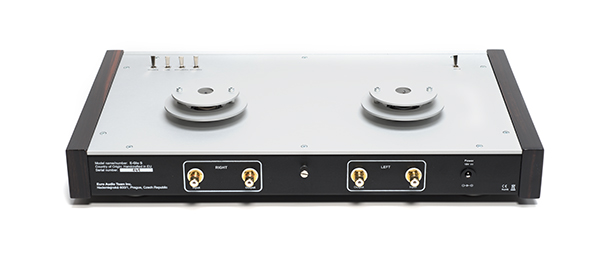 A single 18-volt wall wart takes care of keeping the low-level circuitry away from the power supply, further helping to keep noise at bay. The rear panel only offers a single set of RCA jacks for input and output – a model of simplicity.
A single 18-volt wall wart takes care of keeping the low-level circuitry away from the power supply, further helping to keep noise at bay. The rear panel only offers a single set of RCA jacks for input and output – a model of simplicity.
Accommodating Indeed
Some phonostages require removing the top panel, or taking the unit out of the rack to get to the underside, the E-Glo S lets you adjust MC gain, (45, 50, 55, 65 and 70 db) loading (10, 30, 50, 90, 100, 1000 and 47 Kohms) and capacitance (50, 150, 270, 370, 520, 620 and 740pf) easily from the three switches on the top panel, with LED indicators on the front panel to keep track of your progress. If you are a monogamist when it comes to phono cartridges, just living with the same one until the end of its lifespan, none of this matters. However if you have multiple tables, tonearms, or armwands with different cartridges – lack of access to the gain, loading, and capacitance settings can become tedious.
Using the E-Glo S with a VPI Classic Two and multiple tonearm wand/cartridge combinations is a breeze. Swapping from MM to MC and the required adjustments from Grado Signature 1 to Denon 103r and back, effortless. Even if you don’t use multiple cartridges, the ability to fine tune your cartridge with minimal effort goes a long way to make the analog experience convenient.
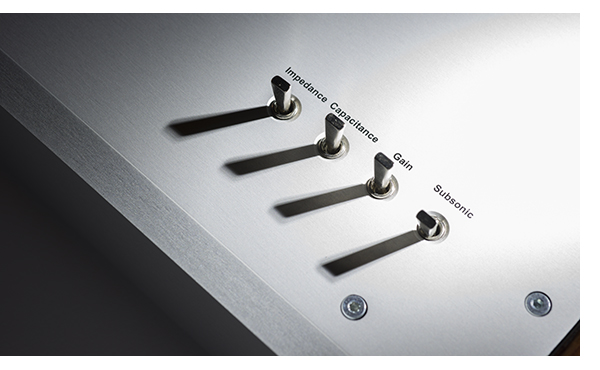 The additional fourth switch is for a subsonic filter. We found this handy when using the E-Glo-S in the main system, equipped with a pair of REL 212SE subwoofers and listening to our favorite hip-hop and EDM tracks. It has a very gentle rolloff and no effect on low bass performance that we could tell. It might be pretty handy if you have wobbly floors too.
The additional fourth switch is for a subsonic filter. We found this handy when using the E-Glo-S in the main system, equipped with a pair of REL 212SE subwoofers and listening to our favorite hip-hop and EDM tracks. It has a very gentle rolloff and no effect on low bass performance that we could tell. It might be pretty handy if you have wobbly floors too.
Running the gamut
While there are a number of intriguing phonostages in the $1,000 range, stepping up to the five figure models reveals a level of tonal sophistication that the lesser models do not. Of course, you need a system capable of resolving the detail, and for many analog enthusiasts, this is overkill. Comparing the E-Glo S to a number of top range phonostages we have on hand from Simaudio, Audio Research, Conrad-Johnson and Pass, the EAT is an excellent balance.
The E-Glo Sis like one of my favorite cars, the BMW M2. It doesn’t offer the ultimate level of performance of an M4 or a Porsche 911, but at real world driving levels, the experience is unmatched. Ditto for the E-Glo S. If you’ve got a mega system, with a top line turntable and you’re running a Goldfinger, Atlas or similar cartridge, you will need more performance than the E-Glo S has to give. (Though even in that context, you will be impressed at just how good it is). VANA’s Nancy Weiner suggests we take the larger E-Glo ($6,995) for a spin, so watch for a future review on this.
Acoustic instruments and complex musical selections really come to life via the E-Glo S. The speed of fast plucked acoustic guitars, or a gently bowed violin has the necessary delicacy to immerse you in sound. Yet there is also enough resolution to discern the difference between a Marshall stack and a stacked pair of Fender cabinets.
The low noise floor makes for great dynamics. Drums sound particularly lifelike, both on attack and decay, whether listening to the tubby drum solo of “In-na-gadda-da-vida” or the intricate work of Neil Peart. And it’s tough to beat tubey goodness for small ensemble and vocal pieces; the amount of texture and breath that the E-Glo S contributes is impeccable.
If you’re working within the context of a well-crafted system, and looking to put together a great analog front end in the $6k-$12k range, that includes the table, cartridge and phonostage of your choice – you will be hard pressed to find anything more revealing than the E-Glo S. The only qualifiers here are a single input, will RCA inputs and outputs work in the context of your system, and do you prefer tubes over transistors.
Speaking of tubes
JFets in the first gain stage keeps the noise lower than can be achieved in an all tube design. Even when placing my ear right up to the horns in the Pure Audio Project TRIO15s used for most of the listening in this review, the tiny bit of noise coming through is almost non-existent. Part of this can be attributed to the high level of quality present in the premium EAT tubes that are supplied with the E-Glo S.
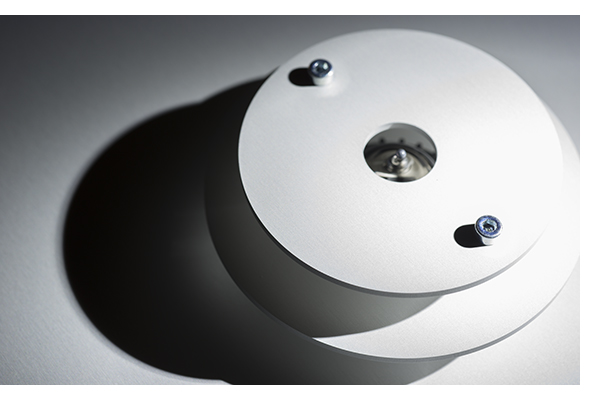 The two supplied ECC83 tubes are a 12AX7 equivalent, and because the supplied EAT tubes are so good, I doubt you will even want to bother tube rolling – another bonus. While many manufacturers are using $10 tubes in their wares, these are premium tubes – a $400 upgrade on their own. Taking this into consideration, the E-Glo S is an even bigger bargain. For those of you that aren’t familiar EAT makes their own vacuum tubes, and you can watch a short video on their home page. Good stuff.
The two supplied ECC83 tubes are a 12AX7 equivalent, and because the supplied EAT tubes are so good, I doubt you will even want to bother tube rolling – another bonus. While many manufacturers are using $10 tubes in their wares, these are premium tubes – a $400 upgrade on their own. Taking this into consideration, the E-Glo S is an even bigger bargain. For those of you that aren’t familiar EAT makes their own vacuum tubes, and you can watch a short video on their home page. Good stuff.
Swapping to run of the mill tubes, takes the noise up and the musicality down, so stick with the EAT tubes when the day to re-tube is finally upon you. For those of you with a secret stash of Telefunkens and Bugle Boys, there may be a few extra molecules of performance to be had, but you know what that costs!
A True analog champion
Running the E-Glo S through its paces with about a dozen different phono cartridges and hundreds of varied musical selections, it confirms its excellent first impression. This is a fantastic phonostage that is without compromise at its price. It’s easy to award this beauty one of our Exceptional Value Awards for 2018.
The EAT E-Glo S Phonostage
MSRP: $2,995
www.vanaltd.com (NA Distributor)
www.europeanaudioteam.com (Manufacturer)
The New Australe EZ Speaker From Triangle
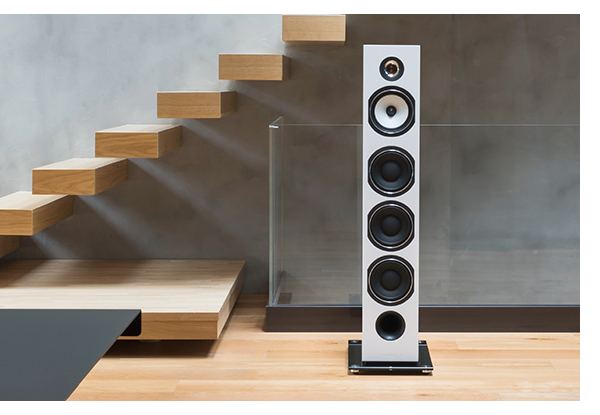 French speaker manufacturer Triangle has just announced the release of the latest reference of the Esprit range – The Australe EZ.
French speaker manufacturer Triangle has just announced the release of the latest reference of the Esprit range – The Australe EZ.
We’ve been very impressed with what we’ve heard from the Triangle speakers we’ve reviewed so far, but the new Australe EZ promises even more, utilizing their DPS (Dynamic Pulse System) technology, previously only in their flagship Magellan range of speakers. It utilizes a second tweeter at the rear of the speaker, helping to add more depth and spatial information. As a further benefit, the sweet spot from the listening position is wider, thanks to the additional dispersion.
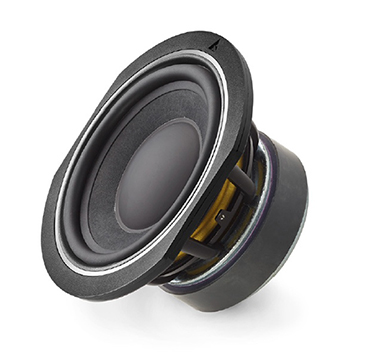 The Australe EZ also takes advantage of new woofer technology, centered around a new composite cone material made of wood pulp and carbon fiber. The resulting woofer cone is more rigid and lower in mass, guaranteeing fast and powerful bass response.
The Australe EZ also takes advantage of new woofer technology, centered around a new composite cone material made of wood pulp and carbon fiber. The resulting woofer cone is more rigid and lower in mass, guaranteeing fast and powerful bass response.
Every other aspect of the speaker has been reworked too, from the cabinet to the crossover network. Even the glass pedestal now has a perforated rubber plate bonded to it to eliminate vibration.
Visit your Triangle dealer to see, better yet, give a listen to their newest creation. We anticipate a pair for review soon.
New Disc Transport From McIntosh
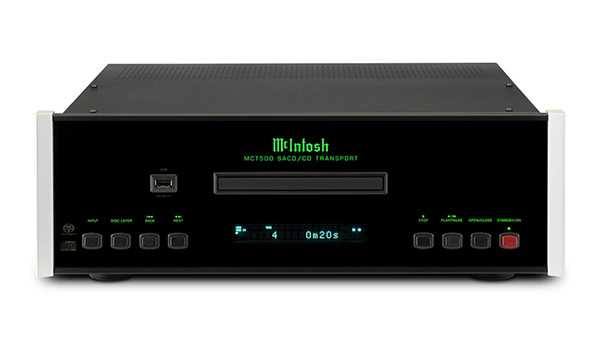 McIntosh just announced the release of their new MCT500 SACD/CD transport.
McIntosh just announced the release of their new MCT500 SACD/CD transport.
This is great news for those of you still committed to the shiny disc. With the ability to play SACD and CD discs, the MCT500 offers TOSLINK, RCA/SPDIF and AES/EBU digital outputs.
Owners of select McIntosh products with their proprietary MCT input will be able to take advantage of the full SACD bitstream as well, via the MCT output on the 500’s back panel.
Of course, the MCT500 shares the aesthetic of previous MAC components, so it will look right at home amongst a rack full of blue and green. $4,500 at your McIntosh dealer now.
Please note that all TONE and TONE related text and images are copyright © 2005–2025 TONE Magazine and The Audiophile Apartment. The RSS feed provided is for personal, non-commercial use only.
If you are not reading this content in your news aggregator, RSS reader, or direct, then the site you are looking at may be guilty of copyright infringement. If you locate this anywhere, please contact [email protected] so we can take action immediately.







